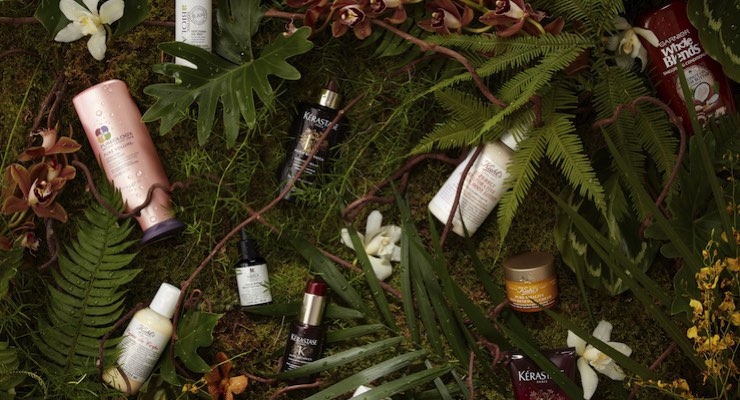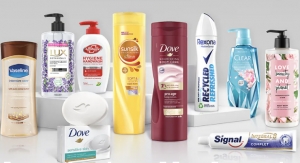04.20.17
L'Oréal USA announced major milestones in its sustainability efforts, achieving 100 percent renewable electricity for its U.S. manufacturing, reducing its carbon emissions by 84 percent, water usage by 52 percent, waste per finished product by 43 percent, and making considerable improvements in package design.
L’Oreal’s key projects include solar projects in Arkansas and Kentucky, wind turbines in Texas, and an eco-design tool used to assess the environmental impact of each product's life cycle. These efforts helped the company achieve a 67 percent reduction in carbon emissions worldwide from a 2005 baseline, while increasing production by 29 percent.
Jean-Paul Agon, chairman/CEO, states in the company’s 2016 Progress Report, which was released today, "We have achieved and even exceeded our target of a 60 percent reduction in CO2 emissions, four years ahead of schedule. This is the result of an immense amount of work by all the teams concerned. It also sends out a strong signal: we are continuing to dissociate our growth from our environmental impact," he said. "While climate change is a major challenge, and we are already seeing its effects on the most vulnerable populations, our commitment is stronger than ever."
Alexandra Palt, Chief Sustainability Officer for L’Oréal, says, "The progress made by our Sharing Beauty With All sustainability program reflects the innovative spirit that is hard at work at L'Oréal, especially in the United States. We remain committed to being a sustainability leader here and around the world, and look forward to exceeding our goals in the future.”
Innovations in Sustainable Packaging
L'Oréal has pledged that 100 percent of its new or renovated products will have an improved environmental or social profile by the year 2020. As of 2016, 82% showed an improvement.
The company also piloted a proprietary eco-design tool to assess the environmental impact of each product's life cycle. To date, L'Oréal has screened more than 40,000 formulas, gaining valuable insights about the environmental profile of each type of formula while maintaining the product efficacy and consumer benefit.
An example of sustainable innovation in the U.S. is the development of the Biolage R.A.W. haircare line, which uses 100% recycled plastic bottles and a 98% biodegradable formula. The line is manufactured in Florence, Kentucky.
Other products manufactured in the U.S. now use bottles with 50 percent recycled plastic, including Pureology Pure Volume Conditioner and Garnier Fructis.
L’Oreal’s key projects include solar projects in Arkansas and Kentucky, wind turbines in Texas, and an eco-design tool used to assess the environmental impact of each product's life cycle. These efforts helped the company achieve a 67 percent reduction in carbon emissions worldwide from a 2005 baseline, while increasing production by 29 percent.
Jean-Paul Agon, chairman/CEO, states in the company’s 2016 Progress Report, which was released today, "We have achieved and even exceeded our target of a 60 percent reduction in CO2 emissions, four years ahead of schedule. This is the result of an immense amount of work by all the teams concerned. It also sends out a strong signal: we are continuing to dissociate our growth from our environmental impact," he said. "While climate change is a major challenge, and we are already seeing its effects on the most vulnerable populations, our commitment is stronger than ever."
Alexandra Palt, Chief Sustainability Officer for L’Oréal, says, "The progress made by our Sharing Beauty With All sustainability program reflects the innovative spirit that is hard at work at L'Oréal, especially in the United States. We remain committed to being a sustainability leader here and around the world, and look forward to exceeding our goals in the future.”
Innovations in Sustainable Packaging
L'Oréal has pledged that 100 percent of its new or renovated products will have an improved environmental or social profile by the year 2020. As of 2016, 82% showed an improvement.
The company also piloted a proprietary eco-design tool to assess the environmental impact of each product's life cycle. To date, L'Oréal has screened more than 40,000 formulas, gaining valuable insights about the environmental profile of each type of formula while maintaining the product efficacy and consumer benefit.
An example of sustainable innovation in the U.S. is the development of the Biolage R.A.W. haircare line, which uses 100% recycled plastic bottles and a 98% biodegradable formula. The line is manufactured in Florence, Kentucky.
Other products manufactured in the U.S. now use bottles with 50 percent recycled plastic, including Pureology Pure Volume Conditioner and Garnier Fructis.




























